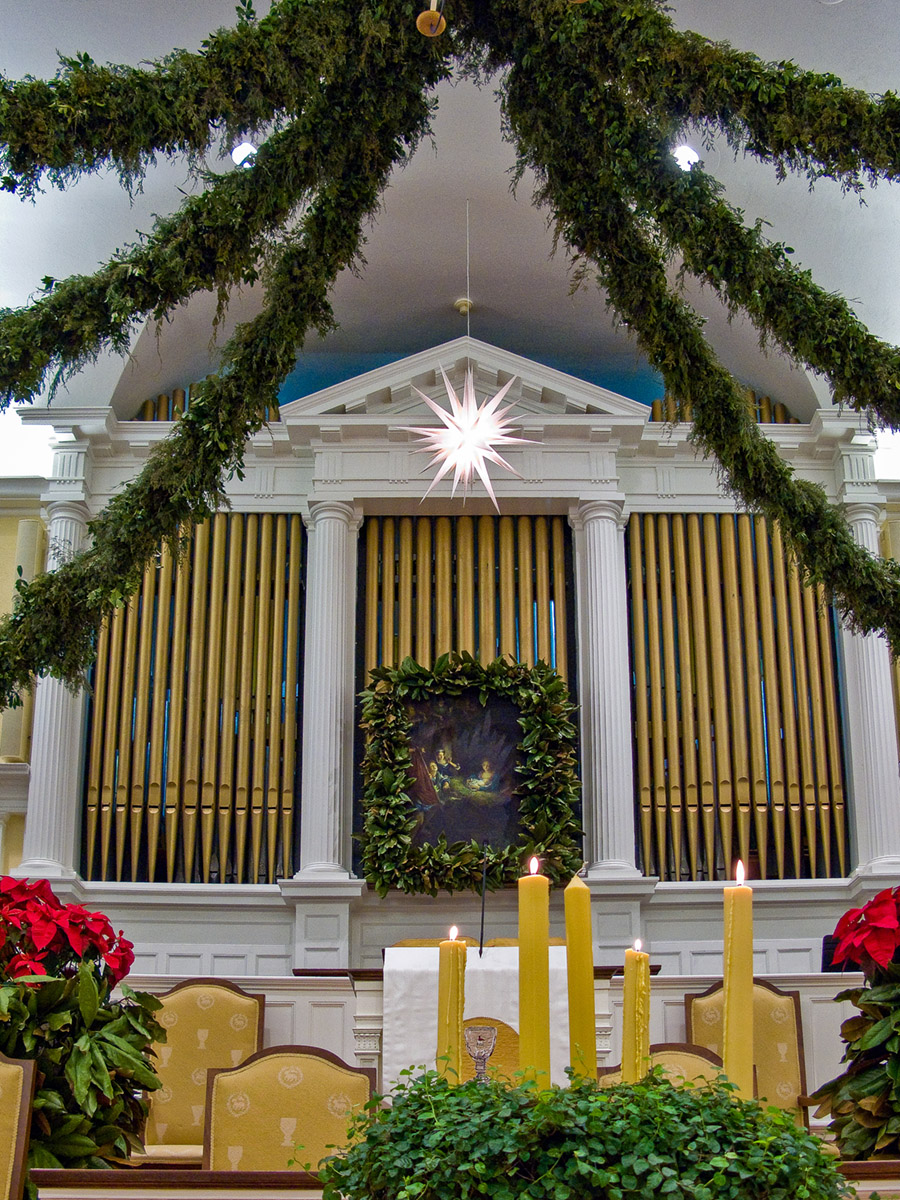The Nativity / Putz

Putz at Central Moravian Church in Bethlehem, Pa.
The first nativity scene originated in Italy in 1223 when St. Francis of Assisi asked a villager to create a live scene depicting the event of the Holy Birth. This was used to help people understand the Christmas story in its simple beauty. St. Francis performed the Christmas mass in front of this “live” nativity.
The putz (a German word meaning “to decorate”) is a Moravian tradition that dates back to 18th century Europe when German craftsmen began to carve figures of the Holy family from local native woods. It is an elaborate miniature display that tells the Christmas story.
When families immigrated to America, they brought some of the figures from their homelands.
Early Moravians in American would prepare their displays and then go “putzing” to view fellow Moravians’ displays in one another’s homes.
The manger is always the center of any putz. Unlike a creche which depicts only a Nativity scene, a putz also includes some of the events prior to and following the birth of Jesus Christ -- from Isaiah’s prophecy and Mary’s Annunciation, to the visit of the wise men and the flight into Egypt. Another distinctive feature can be the inclusion of narration and lights in a Moravian putz to help tell the story of the Holy birth. When placing lights in a nativity scene, the light should always be placed behind the Christ child, symbolizing that the light always comes from Christ.
Regardless of the style - creche or putz - it must always keep central the true message of the season - the birth of our Lord and Savior, Jesus Christ.
THE GARLAND

Garland at Home Church in Winston-Salem, N.C. Photo by John Dyer
Evergreens have long been considered symbols of eternity, a sign of God’s everlasting nature, and an indication that the faithful will experience eternal life in communion with God in Jesus Christ. The Advent custom of decorating with evergreen branches comes to us from the simple peasants of the middle ages. Those common people felt that preparations should be made for the coming of Jesus. On the first Sunday of Advent, each family would gather evergreens -- the ever-fresh, ever-beautiful boughs of the holly, the fir, the spruce, the balsam, or the pine – and place them near the hearth. These were symbols of life everlasting.
As the prophet Isaiah tells us in Isaiah 60:13: “The glory of Lebanon shall come to you, the cypress, the plane, and the pine, to beautify the place of my sanctuary.”
The evergreens we use to decorate our homes and sanctuaries remind us of God’s abiding love in Jesus Christ, and of our eternal fellowship with Him.

